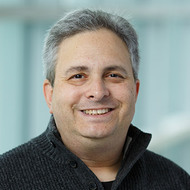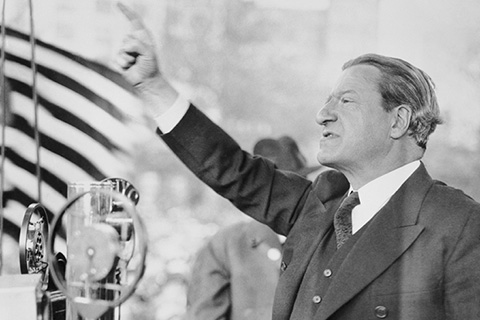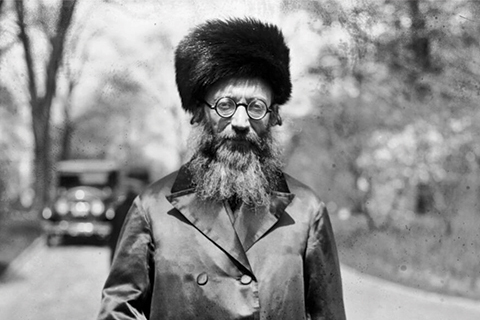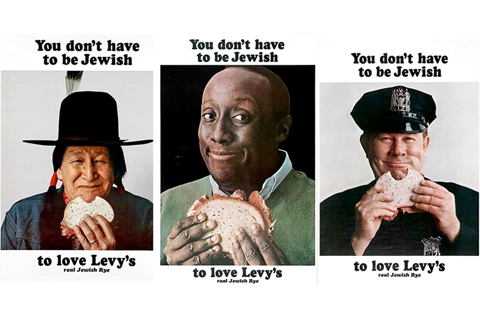The World is Broken, So Humans Must Repair It: The History and Evolution of Tikkun Olam

May 22, 2023
If you asked a Jew in 19th-century Poland, Iraq, or even New York about tikkun olam, they might have shrugged their shoulders and said they didn't know much about it.
"It was a pretty obscure term," said Jonathan Krasner, the Jack, Joseph, and Morton Mandel Associate Professor of Jewish Education Research. "It certainly wasn't used in common parlance."
Today, tikkun olam — Hebrew for "repairing the world" — is ubiquitous. Many American Jews consider it a cornerstone of their Jewish identity, a key reason they're committed to making the world a better place.
The world is broken, the thinking goes, so human beings must repair it by committing to social justice, political activism, or, in the broadest sense, ethical behavior.
In an authoritative scholarly article in 2014, Krasner traced the history and evolution of tikkun olam across nearly two thousand years of Jewish thought and practice to explain how it came to mean what it does today.
TJE spoke with him about the world events and changes in Jewish thinking that led to tikkun olam's transformation from an obscure concept to a universal value.
Tikkun olam isn't mentioned in the Hebrew Bible. Instead, it first appeared in the Talmud, rabbinical commentaries compiled during the 1st millennium CE.
In the Talmud, the rabbis wrote about mipnei tikkun ha-olam, Hebrew for "for the sake of the betterment of society." In this context, tikkun olam justified rabbinic interventions designed to maintain the social order.
For example, the book of Deuteronomy in the Hebrew Bible mandates that every seven years, the ancient Israelites should observe a sabbatical year where the fields are left fallow, and all debts are forgiven. This may have made sense for the Israelites, but when the rabbis wrote the Talmud, it posed a problem.
Why would anyone repay their loan if they knew their debt would soon be canceled? So the rabbis created a workaround to biblical debt forgiveness on the grounds of tikkun olam. Tikkun olam ensured public trust in the borrowing and lending system, thereby safeguarding the social order.
Tikkun olam also appeared in the prayer Aleinu, which dates to the 3rd century CE, though it only became part of the liturgy in the early 1200s. The verse, translated from Hebrew, reads: "Let the time not be distant, O God, when all shall turn to You in love, when all the brokenness in our world is repaired by the work [tikkun olam] of our hands and our hearts, inspired by Your words of Torah."
Here, it lost its economic connotation and took on a religious dimension. It was a messianic idea — repairing the world will bring about the Kingdom of Heaven. It was the belief that at the end of time, the brokenness of the world would be replaced by a more just and godly world.
In the Middle Ages, Kabbalah, a branch of Jewish mysticism, redefined tikkun olam.
Isaac Luria, a leading kabbalistic thinker and rabbi, was disturbed by the problem of evil in the world. How could a world created by God, the supposed embodiment of perfection, contain evil?
To explain, Luria expounded a mythic story of "the broken vessels." I'm oversimplifying, but essentially, evil comes into the world because divine sparks that were part of God's creative light became trapped in shards of broken vessels.
Adam, the first human, failed to restore the sparks of light to God due to his sin, so the responsibility of tikkun, repair, fell to humanity.
How can humanity restore the sparks and God's wholeness, according to Luria? Through prayer, meditation, and performing God’s commandments.
This was a radical understanding of tikkun olam, where it was God’s essence that was being repaired, not the present world, which was intrinsically evil. In fact, the present world would be ultimately replaced with the Kingdom of God. It was tikkun olam on a cosmic level.
And then tikkun olam pretty much disappeared as a major concept in Judaism until the 20th century, when Zionism reappropriated it.
Yes, a strain of religious Zionism saw establishing a Jewish state as a holy endeavor to repair what had been broken 2,000 years earlier when Jewish sovereignty in Palestine ended.
Rabbi Abraham Isaac Kook, the founder of the modern Chief Rabbinate of Israel in the 1920s, was among the first modern Jewish thinkers who believed that tikkun olam could be achieved by humans acting in history, in this case by creating a Jewish state. But interestingly, the term tikkun olam never caught on in Israel the way it did in North America.
This is a pivotal moment in the history of tikkun olam because it puts a new emphasis on human agency.
Certainly, with the kabbalists, humans were engaged in repair, but it was fairly circumscribed. Humans could restore the sparks of God’s light through a set of religious practices, but it was God who brought about the Kingdom of Heaven.
But in Rabbi Kook’s strain of religious Zionism, tikkun olam was a human endeavor.
After the Holocaust, tikkun olam underwent another shift in meaning.
Throughout Jewish history, there was a belief that if Jews lived up to their side of the bargain and did what God expected of them, God would favor and reward them.
The trauma of the Holocaust shook up this understanding. For some, this led to a reevaluation of the covenant between God and the Jewish people.
Some theologians saw the Holocaust as a rupture and argued that the relationship with God needed to be repaired. But this time, rather than God being the dominant partner, humans were. In fact, God was unable or unwilling to intervene in the affairs of humans, so humans had to take responsibility to rebuild this world.
Eventually, tikkun olam became associated with social justice. How does that happen?
It was largely done by Conservative and Reconstructionist Jews, particularly Jews involved in the havurah movement who were politically active in the 1960s and the early 70s. There were also educators interested in offering young idealists a Jewish lens through which to see their political and social activism.
In 1973, three havurah movement activists, Richard Siegel, GSAS MA'72, Michael Strassfeld '71, GSAS MA'72, and Sharon Strassfeld, published "The Jewish Catalog," a best-selling countercultural, do-it-yourself guide to being Jewish. In it, tikkun olam is specifically about making the world a better place.
For example, ending the Vietnam War was seen as an act of tikkun olam. So was combating deforestation and caring for the Jewish elderly in transitioning urban neighborhoods.
It was a universalization of the concept. Yes, it's Jewish, but it has universal implications. You see the concept applied in a much broader and more secular way than before.
In the 1980s, Jewish progressives began using tikkun olam in connection to the Israeli-Palestinian conflict.
Members of the Jewish left founded the New Jewish Agenda, which stated in its platform, “We are Jews who believe strongly that authentic Jewishness can only be complete with serious and consistent attention to tikkun olam (the just ordering of human relationships and the physical-spiritual world).”
Part of that "just ordering" referred to environmentalism and economic justice, but another part involved bringing about peace in the Middle East.
And then a similar agenda was advocated in a new Jewish journal, Tikkun [founded in 1986]. Its editor, Michael Lerner, emerged as the most prominent face of tikkun olam activism and captured the attention of Bill and Hillary Rodham Clinton.
Some critics argue that tikkun olam is now so broadly defined it's meaningless.
It's certainly a term that has taken on a huge number of meanings. For some, it's a kind of secular messianism, a grand utopian vision.
But for others, it can mean something as small as taking out the recycling or putting solar panels on your roof. If you're equating it with something so mundane, you have to ask, "Wait, what is tikkun olam exactly?"
We should keep in mind that tikkun olam is supposed to challenge us to move out of our comfort zone. If it becomes little more than a vaguely Jewish way of embodying politically progressive orthodoxies, it loses its meaning.




